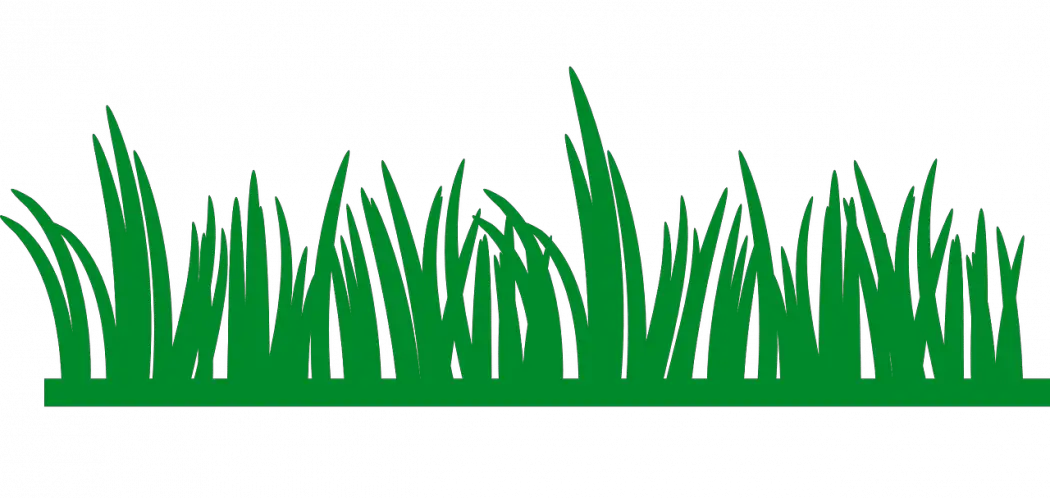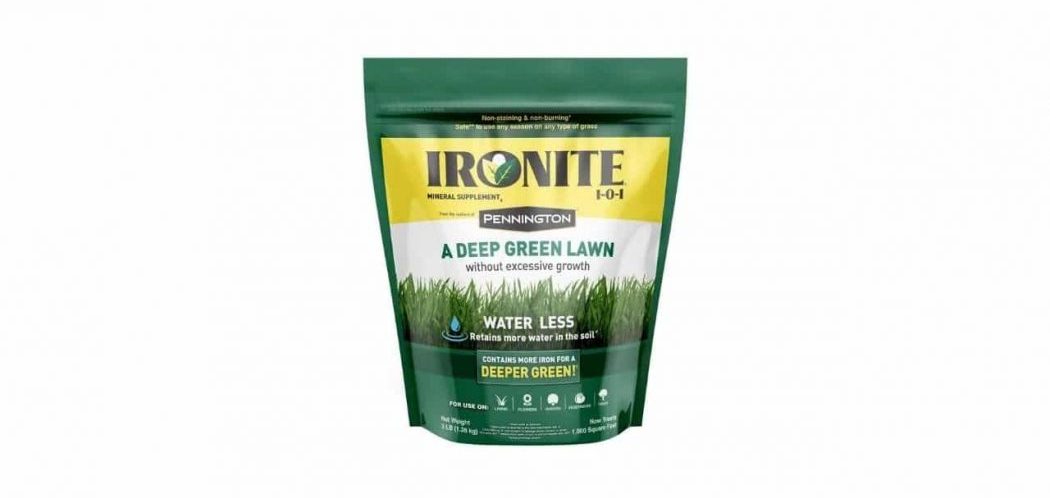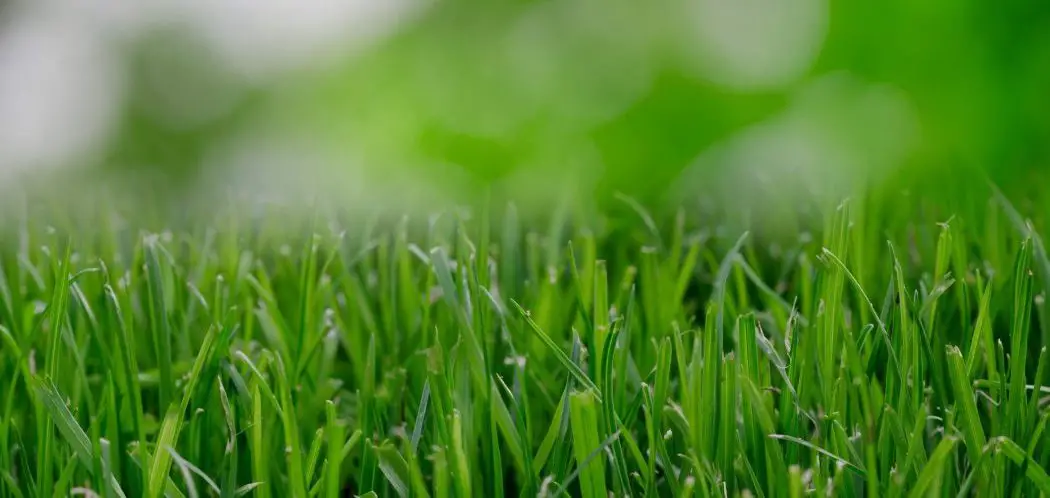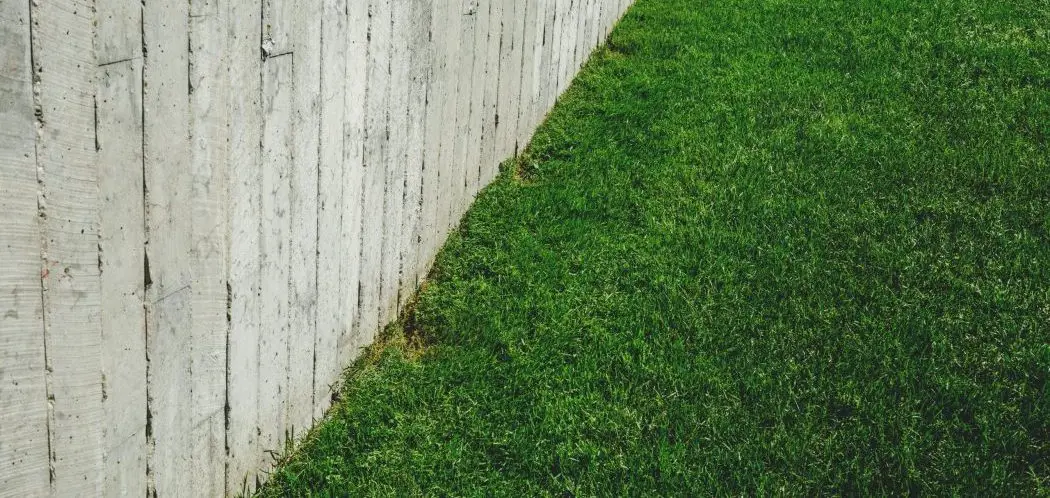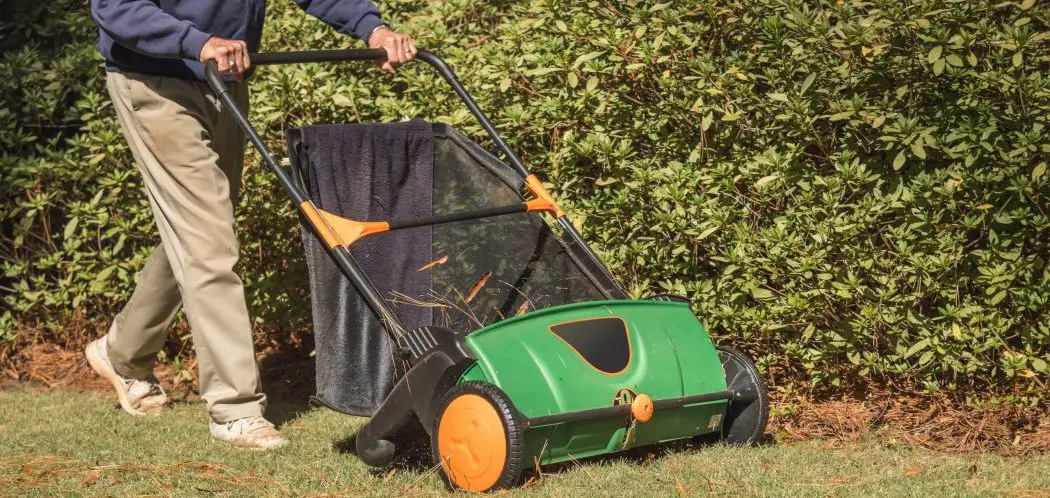Why Use Iron
If you’re going for an emerald green color for your lawn then your regular fertilizer is going to go a long way here, but if you’re looking to get a dark green lawn that has a slight blue/gray tint when you look at it in the sunlight, iron is the secret supplement.
It’s more noticeable on naturally darker cool season grass types, but really you can get great results from using iron on any lawn.
While most fertilizers contain some iron, you may not want to apply any more fertilizer to your lawn.
Sometimes you may not want to use a fertilizer because you don’t always want to be pushing your grass to grow. The majority of fertilizers out there contain a lot of nitrogen which does push growth and this may not be something you want to do in the summer time when the grass is already under a lot of stress from a lack of water and high temperatures.
You also may not want to put any more fertilizer down in the spring because the grass is already growing at a fast rate anyway. If you’re unable to keep your grass height under control and keep up with the mowing you can create yourself more problems.
In any event, there are times when you don’t want to use a fertilizer but you still want to get the benefit of using iron. This is especially true for those of you have a higher pH in the soil (higher than 7). In this case, the iron in your soil is not going to be readily available to you grass so you will need to supplement iron.
There are two ways of supplementing iron and giving your lawn this micronutrient by itself, without stimulating further additional growth.
You can either use iron in a liquid form or a granular form.
In this article, I’ll explain a little bit about each of these and when you might want to choose one over the other.
Remember that iron supplementation is not just for summer applications. Any time you really want to get your lawn to pop (e.g. Halloween), I’d recommend using iron. The time it takes to see results can vary depending on the way you apply it, but that dark blue/green color will stick around for at least a week or so.
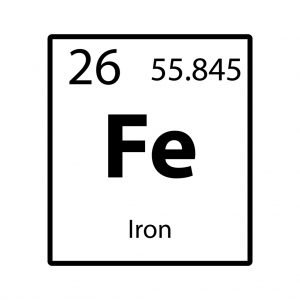
Liquid Iron
Liquid iron is probably the more popular method of application.
The downside of using a liquid iron product is that it can get absolutely everywhere if you’re not careful.
Whatever hand can you decide to use, you might as well dedicate it to be your iron application hand can because it’s hard to get it all out and it will stain the plastic.
Liquid iron will also stain any concrete you have so you have to be very careful when applying it near to any driveways or sidewalks. Anything that you accidently get your liquid iron on will have an orange color – Not a good look! It’s a good idea to have a rag available to immediately wipe off any spillage.
I use Southern Ag 01952 Chelated Liquid Iron with some surfactant (links to Amazon). It’s best applied with a backpack style sprayer. These are the easiest to control and to get the product to sit on the leaf. The idea is that you spray just enough so that you coat the grass blades. The secret is to not put too much water in with it and not to water immediately after application. The plant is going to take it up though the foliage so you don’t want to get it down into the roots. You want only the plant to take it up.
After applying a liquid iron product, you let it sit for a full day so it has the chance to fully soak in.
It’s really important to follow the instructions on the bottle when applying liquid iron. If you apply too much, you can end up turning your grass gray/black.
Sometimes your grass can have a slight brown tint to it after applying liquid iron. This is totally normal and it’s nothing to worry about. Usually this will disappear after the first water after application.
Granular Iron
Some people like to get their iron through Milorganite. While this can help a little, you’re not getting a massive amount of iron. Each bag only contains about 2.5% iron which is not enough to see great results in my opinion.
You can get products like ironite that have a much high iron content (about 20%). The great thing about this product is that it won’t burn your lawn since it doesn’t contain a lot of nitrogen.
I’ve also had great results with Dr. Iron. It’s made up of 22% iron and 55% sulfur.
You put granular iron products down just like you would any fertilizer. You’ll need to use a spreader (I like this one). The bag will give you directions on how to adjust your spreader settings depending upon the model you have. It’s usually recommended that you make a perimeter pass before doing your passes in the middle of the lawn.
Like liquid iron, a granular form will also stain concrete. If you do happen to get any on a sidewalk or driveway, make sure you blow it off straight away.
Granular products do work well. I’ve definitely seen some good results with them but the question becomes which is better – granular or liquid iron?
Granular Iron vs Liquid Iron – Which Is Better?
The good news is that both forms of iron will take your lime green grass and turn the color into a darker shade. Both are quite popular and for good reason. I’ve used both products on my lawn, and I’ve seen some nice changes in person.
Typically, iron products will also contain other micronutrients too which is useful in addressing other slight micronutrient deficiencies you may have. This is a great benefit. Usually you don’t need a lot of different micronutrients to get your soil to where it needs to be.
The problem with a granular product is that you can easily end up missing spots in your yard. I’ve found it can be a little harder to get an even application, even when following instructions for a spreader. Sometimes it’s hard to tell if you have completely covered an entire area evenly whereas with liquid iron, it’s easy to see you have coated the blades.
If you’re using a granular product, you’re going to have to water it in too.
The main difference between using liquid iron and granular iron is how fast you will see results. Usually a liquid iron product is going to get your grass to green up quite a bit faster than a granular. The foliage uptake from liquid iron will be quicker.
It’s hard to tell whether the results are necessarily better with a liquid iron product. It may be just appearing that way because you’re seeing the results faster, and this may or may not matter to you. Nethertheless, it’s something to be aware if you’re looking to get results for a special occasion on a certain day. You’ll want to make sure you’re applying it at the right time to get your lawn to pop when you want it to.
On the other hand, if you’re looking to get something that’s going to last you a little longer, you might want to consider a granular product instead.
The price isn’t much of a factor when it comes to choosing between the two. I’ve found that liquid iron is a little bit cheaper, but the difference is not significant.
When it comes to staining, both products can be a nightmare if you’re not careful.
It really just comes down to personal preference.
Let me know which you prefer!

